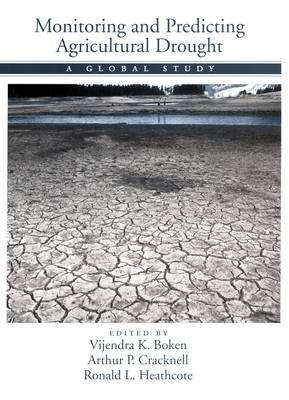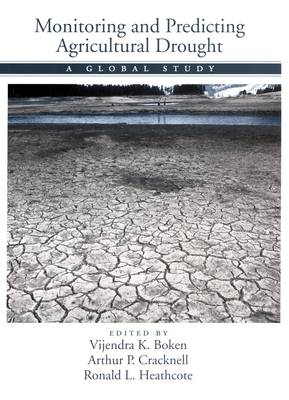
- Afhalen na 1 uur in een winkel met voorraad
- Gratis thuislevering in België vanaf € 30
- Ruim aanbod met 7 miljoen producten
- Afhalen na 1 uur in een winkel met voorraad
- Gratis thuislevering in België vanaf € 30
- Ruim aanbod met 7 miljoen producten
Monitoring and Predicting Agricultural Drought
A Global Study
Vijendra K Boken, Arthur P Cracknell, Ronald L Heathcote
Hardcover | Engels
€ 281,95
+ 563 punten
Omschrijving
Agricultural droughts affect whole societies, leading to higher food costs, threatened economies, and even famine. In order to mitigate such effects, researchers must first be able to monitor them, and then predict them; however no book currently focuses on accurate monitoring or prediction of these devastating kinds of droughts. To fill this void, the editors of Monitoring and Predicting Agricultural Drought have assembled a team of expert contributors from all continents to make a global study, describing biometeorological models and monitoring methods for agricultural droughts. These models and methods note the relationships between precipitation, soil moisture, and crop yields, using data gathered from conventional and remote sensing techniques. The coverage of the book includes probabilistic models and techniques used in America, Europe and the former USSR, Africa, Asia, and Australia, and it concludes with coverage of climate change and resultant shifts in agricultural productivity, drought early warning systems, and famine mitigation. This will be an essential collection for those who must advise governments or international organizations on the current scope, likelihood, and impact of agricultural droughts.
Sponsored by the World Meterological Organization
Sponsored by the World Meterological Organization
Specificaties
Betrokkenen
- Auteur(s):
- Uitgeverij:
Inhoud
- Aantal bladzijden:
- 496
- Taal:
- Engels
Eigenschappen
- Productcode (EAN):
- 9780195162349
- Verschijningsdatum:
- 14/04/2005
- Uitvoering:
- Hardcover
- Formaat:
- Genaaid
- Afmetingen:
- 156 mm x 234 mm
- Gewicht:
- 866 g

Alleen bij Standaard Boekhandel
+ 563 punten op je klantenkaart van Standaard Boekhandel
Beoordelingen
We publiceren alleen reviews die voldoen aan de voorwaarden voor reviews. Bekijk onze voorwaarden voor reviews.










